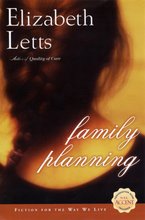New raves for The Butter Man
Booklist - January 15, 2008
Every Sunday night, Nora watches her Moroccan-born baba (father) prepare a couscous meal in a special pot that he carried with him to the U.S. in his suitcase. One evening, Baba shares a story about how he coped with a famine during his childhood, spent in the mountains of Morocco. The authors, a married couple who drew on Ali's personal experience, write in descriptive language that speaks directly to children. Baba says that hunger, for example, feels like "a little mouse gnawing on my insides." The folk-art paintings, created by a textile designer, feature whimsical characters and cozy domestic scenes, while the ocre, gold, and rust palette evokes the feeling of the dusty, sunlit landscape. An author's note adds cultural context, and an appended glossary defines the Berber words used in the text. This warm family story about a rarely viewed culture will have particular appeal among children of immigrants, who, like Nora, wonder about their parents' mysterious, former lives in another land.
JANUARY 01, 2008
Saturday evening, Nora's mother is at work, and Nora waits for her father to cook couscous. To pass the time, he talks about his childhood in Morocco. During a time without rain, his father sold the cow and left for the mountains to work. Soon, there was no butter left and only bread to eat. Young Ali's mother sent him to wait for the butter man, but Ali ate the bread before his arrival. Day after day this happened, until finally, Ali's father returned with food. And the butter man? Perhaps he never came, but the rain did, and eventually, the family was able to buy another cow. With perfect timing, Nora's mother arrives home from work, and the family enjoys a flavorful feast in a satisfying conclusion of this realistic Jack in the Beanstalk tale. Essakalli's memorable gouache illustrations provide a sense of place, and while the Berber words in the text are not always immediately defined, a glossary is located in the back. Also includes an informative author's note on the Berber, or Imazighen, people of Morocco. (Picture book. 5-9)
Friday, January 11, 2008
Subscribe to:
Posts (Atom)








